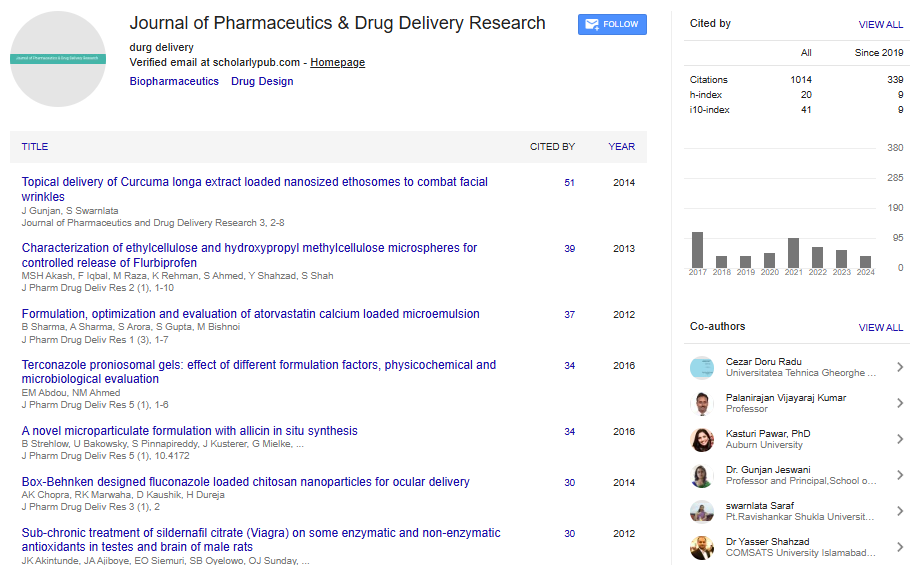Peptide-based nanoparticles of immune-evasive, immune-tolerable, and immune-active properties
Shunsaku Kimura
Kyoto University, Japan
: J Pharm Drug Deliv Res
Abstract
Statement of the Problem: There are several candidates for a carrying vehicle of imaging and therapeutic agents targeting various kinds of tumors in the field of the emerging theranositcs. One effective vehicle is fully human antibodies, however, which cost high to threaten the preservation of the universal health insurance in Japan. Nanoparticles are the other potential candidates for the vehicle owing to the passive accumulation in solid tumors so called the EPR effect. However, nanoparticles should resolve the serious problem of the Accelerated Blood Clearance (ABC) phenomenon which is the immune response triggered by nanoparticles. The purpose of this study is to demonstrate the designs of nanoparticles displaying immune-evasive, immune-tolerable, and immuneactive properties. Methodology: Nanoparticles were prepared by the method of molecular assembling. The component molecules were amphiphilic polypeptides and polydepsipeptides having poly(sarcosine) as a hydrophilic block. Findings: Nanoparticles having a densely packed hydrophilic layer around them were shown to evade from the immune system. When the nanoparticles were intravenously injected in tumor-bearing mice, they were found to accumulate in the tumor region at the 1st and 2nd doses similarly. On the other hand, another nanoparticle, which was recognized by the immune system, was converted to the immune-tolerable nanoparticle by decorating the surface with sialic acid derivatives. Further, the immune-active nanoparticle was examined with using Ley as an antigen of solid tumors. The nanosheet expressing Ley on the surface was shown to be the most effective to trigger the immune system. Conclusion & Significance: Nanoparticles intrinsically triggers the immune system, but can escape by a suitable surface design. The nanoparticles can be immune-tolerable by incorporation of sialic acids. Further, the antigen-carrying nanoparticle can be applied for cancer vaccination. Taken together, nanoparticles are highly potential in cancer medicine, resulting in support for the universal health insurance.
Biography
Shunsaku Kimura has his expertise in Peptide Engineering in providing various kinds of peptide materials. He has invented to prepare molecular assemblies showing various morphologies of planar sheet, vesicle, and tube with homogeneous size distributions. This method is now extended to prepare chimeric morphologies including a round-bottom-shaped morphology which is considered as a combined morphology of vesicle and tube. One of the molecular assemblies has been successfully applied for the theranostics of solid tumors, where the nanoparticle is labeled with indium-111 for SPECT imaging and with yttrium-90 for therapy. Breast cancer, bone cancer, brain cancer, and meningeal seeding can be nicely targeted with this nanoparticle. This approach paves a challenging aspect of nanoparticle based on the new concept of molecular design taking immune response into consideration.
Email: shun@scl.kyoto-u.ac.jp
 Spanish
Spanish  Chinese
Chinese  Russian
Russian  German
German  French
French  Japanese
Japanese  Portuguese
Portuguese  Hindi
Hindi 
